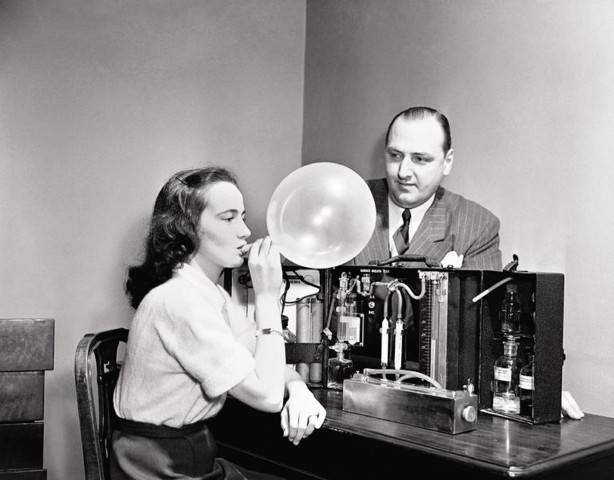
This photograph shows Dorothy Brengel, a volunteer, help W.D. Foden, Chairman of Statler Safety Committee, demonstrate the “Drunkometer,” a breath test for alcohol, on display at the Greater New York Safety Council, Hotel Statler on March 28, 1950. For the preliminary test, the breath of the suspect is collected in a balloon and passed through a purple fluid (potassium permanganate and sulphuric acid) to see if it changes color. The breath of a non-drinking person will cause no change. If the purple color disappears, the amount of breath required to accomplish this indicates the approximate accumulation of alcohol in the blood.
In 1938, on New Year’s Eve, police in Indianapolis put a new piece of technology through its first practical test.

They used a breathalyzer to determine if someone had been drinking. What was then called the Drunkometer was based on the same idea as modern breathalyzers: a person blows into a bag, which contains chemicals that react according to how much alcohol is on a person’s breath.
Modern breathalyzers first came on the market in 1954. Since then, the idea behind the technology has been refined and now infrared spectroscopy is used in some models to determine alcohol levels.

In 1938, on New Year’s Eve, police in Indianapolis put a new piece of technology through its first practical test.

They used a breathalyzer to determine if someone had been drinking. What was then called the Drunkometer was based on the same idea as modern breathalyzers: a person blows into a bag, which contains chemicals that react according to how much alcohol is on a person’s breath.
Modern breathalyzers first came on the market in 1954. Since then, the idea behind the technology has been refined and now infrared spectroscopy is used in some models to determine alcohol levels.


